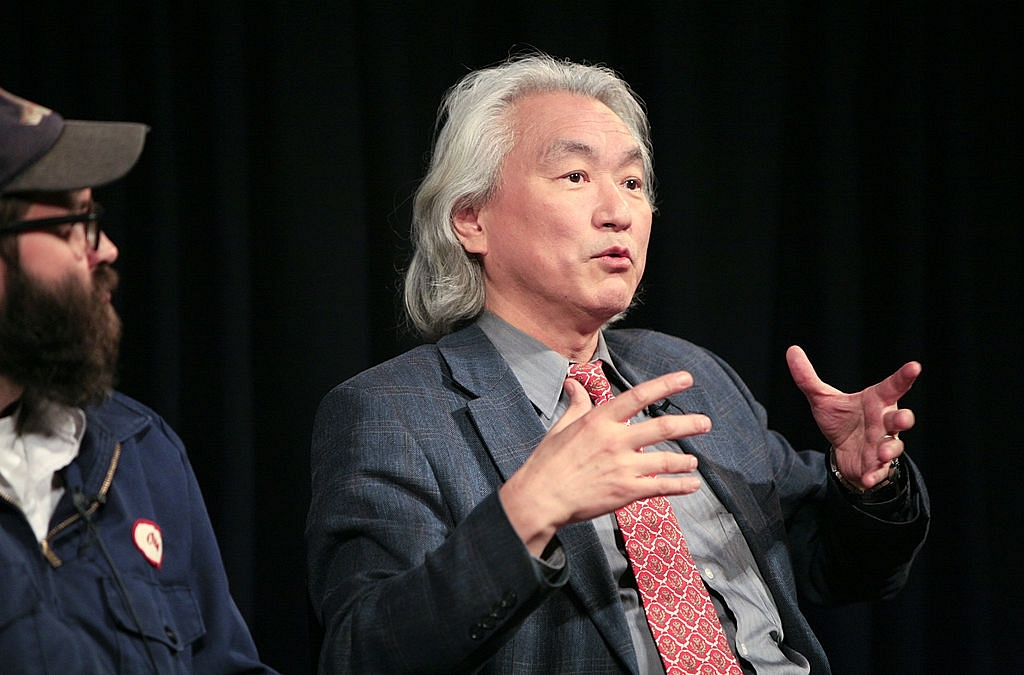Science
A Futuristic Look At Science: The Amazing Predictions Of Michio Kaku
- Michio Kaku has made many scientific predictions in his illustrious life.
- Many of these predictions, as miraculous as they are, have come true to a large extent.
- Now he makes predictions for how the world will look in 2100.

Physicist Michio Kaku speaks at the panel discussion ‘Parallel Worlds, Parallel Lives’ at the World Science Festival in New York City. (Amy Sussman/Getty Images for World Science Festival)
Consider the year 1996. That's twenty years ago. Multimedia was in its infancy. There was no Google, no social media. Electric vehicles were a dream. Amazon had just started. The Human Genome Project was underway.
In his book Visions: How Science will Revolutionize the 21st Century (1997), Michio Kaku, acclaimed theoretical physicist and string field theory co-founder, discussed the status of science in 1996 and made several predictions for how the world would look in 2020 and even later. As the host of a TV show, he spoke to nearly 150 scientists and technologists on what the near and distant future holds.
Reading the book now, it becomes clear that he got many things spot on. He talked about how microprocessors would become cheap, and computing pervasive. With a flourishing mobile revolution worldwide and chips in refrigerators, washing machines, playstations and so on, computing is indeed pervasive.
He was right about electric/hybrid vehicles and automated (driverless) cars. He was right about the Internet of Things. He was also right about the dominance of artificial intelligence and robotics. He also predicted the advent of internet glasses; there is now, for instance, the Google Glass.
Kaku says the twentieth century saw three scientific revolutions: the computer revolution, the quantum revolution and the biomolecular revolution. By 2020, a new era would be heralded, one of synergy between the three revolutions. This is indeed happening. Bioinformatics is an example of synergy between the biomolecular revolution and the computer revolution, resulting in automated gene-sequencing and genotype/phenotype matching. Advances in magnetic resonance imaging is a synergy between the biomolecular revolution and the quantum revolution. Visions is an engrossing read even now, twenty years later.
In 2011, Kaku again spoke to 300 scientists and technologists, and came up with another book. Physics of the Future: The Inventions That Will Transform Our Lives (2011) is a futuristic look at progress in science till the year 2100 AD. He says,
Kaku covers the entire gamut of science (not just physics), including information technology, artificial intelligence, medicine, nanotechnology, energy and space travel. At the end of the book, he provides a tantalising glimpse into a day in January 2100.
Some of his predictions are mind-blowing. For instance, he claims that by 2100, telepathy (mind-to-mind communication) and telekinesis (moving objects by means of the mind) will be possible. I heard that recently scientists have been able to record dreams and even upload thoughts into a rat’s brain. And as Kaku writes, paralysed people have been hooked up to computers and are able to control cursor movements through their thoughts. So his claims may not seem far-fetched. Maybe, as he says, “By 2100, our destiny is to become like the gods we once worshipped and feared.”
Since energy is one of the specialisations of this writer, here are some points about Kaku’s predictions on energy.
Kaku believes that by 2100, we would have succeeded in harnessing fusion power, which would supply us with unlimited energy for our needs. We may be able to develop room-temperature superconductors by then, which could be used to build roads on which our (driverless) cars could float (move without friction), and at very high speeds. Since a lot of energy is expended currently in overcoming the friction on roads, high-temperature superconductors can drastically reduce energy consumption.
By then, we would also be capable of “sending hundreds of space satellites into orbit around the earth, absorbing radiation from the sun, and then beaming this energy down to earth in the form of microwave radiation.”
Kaku’s book, like his predictions, is miraculous. This writer has a twinge of regret that he would not live to see these changes occur by 2100.
We live in an inflection point in history, and, if futurist Ray Kurzweil is right, in the proximity of a singularity. It is quite probable that we will witness some enormous upheavals in our way of life.
Introducing ElectionsHQ + 50 Ground Reports Project
The 2024 elections might seem easy to guess, but there are some important questions that shouldn't be missed.
Do freebies still sway voters? Do people prioritise infrastructure when voting? How will Punjab vote?
The answers to these questions provide great insights into where we, as a country, are headed in the years to come.
Swarajya is starting a project with an aim to do 50 solid ground stories and a smart commentary service on WhatsApp, a one-of-a-kind. We'd love your support during this election season.
Click below to contribute.
Latest